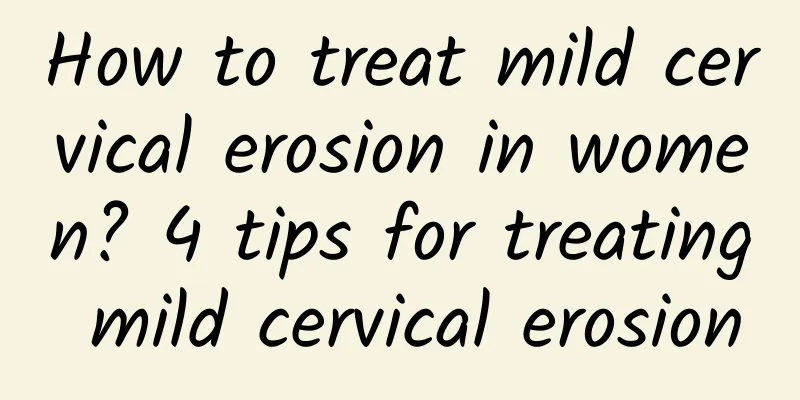What kind of surgery is usually performed for uterine fibroids? How big is a uterine fibroid that requires surgery?

|
Uterine fibroids are a common benign disease of the female reproductive organs, characterized by the proliferation of uterine smooth muscle and the formation of muscle nodules. With the development of medical technology, the treatment of uterine fibroids has become increasingly diverse. In some cases, surgery may be the best choice for treating uterine fibroids. So, what kind of surgery is usually performed for uterine fibroids? How big a uterine fibroid usually requires surgery? For patients with uterine fibroids, surgery may be one of the most common treatments. Depending on the size, number, location of the fibroids, as well as the patient's symptoms and fertility needs, doctors will choose different surgical methods. Common surgical methods include myomectomy, myomectomy and myomectomy. Myomectomy is a surgical procedure that removes uterine fibroids while preserving the uterus. This procedure is suitable for patients with small, few, and concentrated fibroids. During the operation, the doctor will enter the uterine cavity through the cervix, peel off the fibroids, and remove them one by one. This surgical method can preserve the uterus and is suitable for patients who want to maintain their chances of having children. Myomectomy is a surgical method that preserves the uterus by removing the root part of the uterine fibroids, the ovary cavity or the fibroid cavity. Compared with extirpation, extirpation can remove larger fibroids and is usually suitable for patients with larger, more numerous or more dispersed fibroids. During the operation, the doctor will enter the uterine cavity through an abdominal incision, cut the fibroids, and preserve the uterus. Myomectomy is a surgical procedure that completely removes the fibroids by removing the entire uterus. This procedure is suitable for patients with large, numerous, scattered or irregular uterine fibroids. During the operation, the doctor will enter the uterine abdominal cavity through an abdominal incision and remove the entire uterus. Because the uterus is removed, this surgical method is usually only suitable for women who no longer plan to become pregnant. So, how big does a uterine fibroid need to be to require surgery? There is no definite answer to this question, because each case is unique. Generally speaking, if the uterine fibroid causes obvious symptoms (such as irregular menstruation, pain, anemia, etc.) or has a significant impact on fertility plans, then surgery may be an optional treatment method. For those patients who have no obvious symptoms and do not affect fertility plans, conservative treatments such as observation and drug therapy can be adopted. Uterine fibroids are generally treated surgically. The specific surgical method chosen depends on the size, number, and location of the fibroids, as well as the patient's symptoms and fertility needs. When deciding whether to have surgery, the decision should be made based on individual patient differences and the doctor's professional advice. Uterine fibroids are a common tumor in women, and their symptoms include irregular menstruation, pelvic pain, and compression symptoms. Although uterine fibroids are generally treated surgically, not all patients require surgery. For some patients who have no obvious symptoms or do not plan to get pregnant, observation and drug treatment are also a viable option. Therefore, when facing the treatment of uterine fibroids, patients should consult a doctor and make decisions based on individual circumstances and the doctor's professional advice. Early detection and timely treatment are the key to preventing uterine fibroids and reducing the occurrence of related symptoms. |
<<: What are the 3 signs of uterine fibroids? The most common symptoms of uterine fibroids
Recommend
What is related to miscarriage? 8 factors that lead to miscarriage
Any pregnancy that ends before 28 weeks is called...
What are the causes and symptoms of female vulvar leukoplakia?
Usually, the cause of vulvar leukoplakia is mainl...
How to regulate irregular menstruation for women? Different body types need different treatment methods for irregular menstruation
What should I do if I have irregular menstruation...
Is ectopic pregnancy hereditary?
Is ectopic pregnancy hereditary? Ectopic pregnanc...
Hyperprolactinemia treatment steps
Hyperprolactinemia is a common disease among wome...
How to treat ovarian chocolate cyst?
How to treat ovarian chocolate cyst? Ovarian choc...
The most common symptoms of pelvic peritonitis are
Pelvic peritonitis not only has a certain impact ...
How is pelvic inflammatory disease diagnosed?
How is pelvic inflammatory disease diagnosed? Pel...
Menopause is not just about hot flashes, be careful about abdominal obesity! Nutritionist Lin Yaen teaches 7 tips to easily lose fat
Symptoms of menopause are not limited to hot flas...
Nursing record for threatened abortion
What should we pay attention to in the care of th...
Introduction to non-surgical methods for treating cervicitis
There are many non-surgical methods for the treat...
[Video version] Lose weight by not eating rice and bread ~ The end result of "sugar-restricted diet" is myocardial infarction!
People who want to get rid of obesity and lose we...
What are the early symptoms of ovarian cysts?
Ovarian cysts are a common gynecological disease....
Why does vaginitis often recur after treatment?
Why does vaginitis often recur after treatment? F...
Detailed analysis of various clinical symptoms of cervicitis
Clinically, there are many different symptoms of ...









